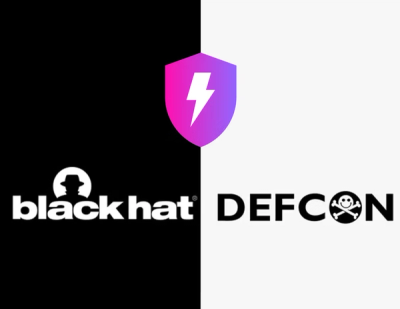What is react-intersection-observer?
The react-intersection-observer package is a React implementation of the Intersection Observer API, making it easier to perform actions based on how an element intersects with the viewport. It's useful for lazy loading, infinite scroll, or triggering animations when the user scrolls.
What are react-intersection-observer's main functionalities?
Observing visibility of an element
This feature allows you to track the visibility of a component or element. The `useInView` hook returns a `ref` that you attach to the element you want to observe. It also returns a state `inView` that tells you whether the element is in the viewport or not.
import { useInView } from 'react-intersection-observer';
function Component() {
const { ref, inView } = useInView();
return (
<div ref={ref}>
{inView ? 'In view!' : 'Not in view!'}
</div>
);
}
Triggering animations when entering the viewport
This code sample demonstrates how to use the `useInView` hook to trigger animations or add classes to an element once it enters the viewport. The `threshold` option specifies how much of the element should be visible before `inView` becomes true.
import { useInView } from 'react-intersection-observer';
import { useEffect } from 'react';
function AnimatedComponent() {
const { ref, inView } = useInView({ threshold: 0.1 });
useEffect(() => {
if (inView) {
// Trigger animation or add class
}
}, [inView]);
return <div ref={ref}>Animate me!</div>;
}
Other packages similar to react-intersection-observer
react-lazy-load-image-component
This package is designed specifically for lazy loading images in React applications. It provides components like `LazyLoadImage` for easy integration. While it's focused on images, react-intersection-observer offers a more general approach for observing any element's visibility.
react-waypoint
React Waypoint is another package for handling the visibility of elements during scroll. It triggers a function when you scroll to an element. Compared to react-intersection-observer, it's less flexible with the observer options but still a solid choice for simple use cases.
react-intersection-observer





React implementation of the
Intersection Observer API
to tell you when an element enters or leaves the viewport. Contains both a
Hooks, render props and
plain children implementation.
Features
- 🪝 Hooks or Component API - With
useInView it's easier than ever to
monitor elements
- ⚡️ Optimized performance - Reuses Intersection Observer instances where
possible
- ⚙️ Matches native API - Intuitive to use
- 🛠 Written in TypeScript - It'll fit right into your existing TypeScript
project
- 🧪 Ready to test - Mocks the Intersection Observer for easy testing with
Jest or Vitest
- 🌳 Tree-shakeable - Only include the parts you use
- 💥 Tiny bundle - Around ~1.15kB for
useInView and ~1.6kB for
<InView>

Installation
Install the package with your package manager of choice:
npm install react-intersection-observer --save
Usage
useInView hook
const { ref, inView, entry } = useInView(options);
const [ref, inView, entry] = useInView(options);
The useInView hook makes it easy to monitor the inView state of your
components. Call the useInView hook with the (optional) options
you need. It will return an array containing a ref, the inView status and
the current
entry.
Assign the ref to the DOM element you want to monitor, and the hook will
report the status.
import React from "react";
import { useInView } from "react-intersection-observer";
const Component = () => {
const { ref, inView, entry } = useInView({
threshold: 0,
});
return (
<div ref={ref}>
<h2>{`Header inside viewport ${inView}.`}</h2>
</div>
);
};
Render props
To use the <InView> component, you pass it a function. It will be called
whenever the state changes, with the new value of inView. In addition to the
inView prop, children also receive a ref that should be set on the
containing DOM element. This is the element that the Intersection Observer will
monitor.
If you need it, you can also access the
IntersectionObserverEntry
on entry, giving you access to all the details about the current intersection
state.
import { InView } from "react-intersection-observer";
const Component = () => (
<InView>
{({ inView, ref, entry }) => (
<div ref={ref}>
<h2>{`Header inside viewport ${inView}.`}</h2>
</div>
)}
</InView>
);
export default Component;
Plain children
You can pass any element to the <InView />, and it will handle creating the
wrapping DOM element. Add a handler to the onChange method, and control the
state in your own component. Any extra props you add to <InView> will be
passed to the HTML element, allowing you set the className, style, etc.
import { InView } from "react-intersection-observer";
const Component = () => (
<InView as="div" onChange={(inView, entry) => console.log("Inview:", inView)}>
<h2>Plain children are always rendered. Use onChange to monitor state.</h2>
</InView>
);
export default Component;
[!NOTE]
When rendering a plain child, make sure you keep your HTML output
semantic. Change the as to match the context, and add a className to style
the <InView />. The component does not support Ref Forwarding, so if you
need a ref to the HTML element, use the Render Props version instead.
API
Options
Provide these as the options argument in the useInView hook or as props on the
<InView /> component.
| root | Element | document | The Intersection Observer interface's read-only root property identifies the Element or Document whose bounds are treated as the bounding box of the viewport for the element which is the observer's target. If the root is null, then the bounds of the actual document viewport are used. |
| rootMargin | string | '0px' | Margin around the root. Can have values similar to the CSS margin property, e.g. "10px 20px 30px 40px" (top, right, bottom, left). Also supports percentages, to check if an element intersects with the center of the viewport for example "-50% 0% -50% 0%". |
| threshold | number or number[] | 0 | Number between 0 and 1 indicating the percentage that should be visible before triggering. Can also be an array of numbers, to create multiple trigger points. |
| onChange | (inView, entry) => void | undefined | Call this function whenever the in view state changes. It will receive the inView boolean, alongside the current IntersectionObserverEntry. |
| trackVisibility 🧪 | boolean | false | A boolean indicating whether this Intersection Observer will track visibility changes on the target. |
| delay 🧪 | number | undefined | A number indicating the minimum delay in milliseconds between notifications from this observer for a given target. This must be set to at least 100 if trackVisibility is true. |
| skip | boolean | false | Skip creating the IntersectionObserver. You can use this to enable and disable the observer as needed. If skip is set while inView, the current state will still be kept. |
| triggerOnce | boolean | false | Only trigger the observer once. |
| initialInView | boolean | false | Set the initial value of the inView boolean. This can be used if you expect the element to be in the viewport to start with, and you want to trigger something when it leaves. |
| fallbackInView | boolean | undefined | If the IntersectionObserver API isn't available in the client, the default behavior is to throw an Error. You can set a specific fallback behavior, and the inView value will be set to this instead of failing. To set a global default, you can set it with the defaultFallbackInView() |
InView Props
The <InView /> component also accepts the following props:
| as | IntrinsicElement | 'div' | Render the wrapping element as this element. Defaults to div. If you want to use a custom component, please use the useInView hook or a render prop instead to manage the reference explictly. |
| children | ({ref, inView, entry}) => ReactNode or ReactNode | undefined | Children expects a function that receives an object containing the inView boolean and a ref that should be assigned to the element root. Alternatively pass a plain child, to have the <InView /> deal with the wrapping element. You will also get the IntersectionObserverEntry as entry, giving you more details. |
Intersection Observer v2 🧪
The new
v2 implementation of IntersectionObserver
extends the original API, so you can track if the element is covered by another
element or has filters applied to it. Useful for blocking clickjacking attempts
or tracking ad exposure.
To use it, you'll need to add the new trackVisibility and delay options.
When you get the entry back, you can then monitor if isVisible is true.
const TrackVisible = () => {
const { ref, entry } = useInView({ trackVisibility: true, delay: 100 });
return <div ref={ref}>{entry?.isVisible}</div>;
};
This is still a very new addition, so check
caniuse for current browser
support. If trackVisibility has been set, and the current browser doesn't
support it, a fallback has been added to always report isVisible as true.
It's not added to the TypeScript lib.d.ts file yet, so you will also have to
extend the IntersectionObserverEntry with the isVisible boolean.
Recipes
The IntersectionObserver itself is just a simple but powerful tool. Here's a
few ideas for how you can use it.
FAQ
How can I assign multiple refs to a component?
You can wrap multiple ref assignments in a single useCallback:
import React, { useRef, useCallback } from "react";
import { useInView } from "react-intersection-observer";
function Component(props) {
const ref = useRef();
const { ref: inViewRef, inView } = useInView();
const setRefs = useCallback(
(node) => {
ref.current = node;
inViewRef(node);
},
[inViewRef],
);
return <div ref={setRefs}>Shared ref is visible: {inView}</div>;
}
rootMargin isn't working as expected
When using rootMargin, the margin gets added to the current root - If your
application is running inside a <iframe>, or you have defined a custom root
this will not be the current viewport.
You can read more about this on these links:
Testing
[!TIP]
Consider using Vitest Browser Mode instead of jsdom or happy-dom.
This option allows you to utilize the real browser implementation and triggers correctly when scrolling or adding elements to the viewport. You can skip the react-intersection-observer/test-utils, or use it as needed.
In order to write meaningful tests, the IntersectionObserver needs to be
mocked. You can use the included react-intersection-observer/test-utils to
help with this. It mocks the IntersectionObserver, and includes a few methods
to assist with faking the inView state. When setting the isIntersecting
value you can pass either a boolean value or a threshold between 0 and 1. It
will emulate the real IntersectionObserver, allowing you to validate that your
components are behaving as expected.
mockAllIsIntersecting(isIntersecting) | Set isIntersecting on all current Intersection Observer instances. The value of isIntersecting should be either a boolean or a threshold between 0 and 1. |
mockIsIntersecting(element, isIntersecting) | Set isIntersecting for the Intersection Observer of a specific element. The value of isIntersecting should be either a boolean or a threshold between 0 and 1. |
intersectionMockInstance(element) | Call the intersectionMockInstance method with an element, to get the (mocked) IntersectionObserver instance. You can use this to spy on the observe andunobserve methods. |
setupIntersectionMocking(mockFn) | Mock the IntersectionObserver, so we can interact with them in tests - Should be called in beforeEach. (Done automatically in Jest environment) |
resetIntersectionMocking() | Reset the mocks on IntersectionObserver - Should be called in afterEach. (Done automatically in Jest/Vitest environment) |
destroyIntersectionMocking() | Destroy the mocked IntersectionObserver function, and return window.IntersectionObserver to the original browser implementation |
Testing Libraries
This library comes with built-in support for writing tests in both
Jest and Vitest
Jest
Testing with Jest should work out of the box. Just import the
react-intersection-observer/test-utils in your test files, and you can use the
mocking methods.
Vitest
If you're running Vitest with globals,
then it'll automatically mock the IntersectionObserver, just like running with
Jest. Otherwise, you'll need to manually setup/reset the mocking in either the
individual tests, or a setup file.
import { vi, beforeEach, afterEach } from "vitest";
import {
setupIntersectionMocking,
resetIntersectionMocking,
} from "react-intersection-observer/test-utils";
beforeEach(() => {
setupIntersectionMocking(vi.fn);
});
afterEach(() => {
resetIntersectionMocking();
});
You only need to do this if the test environment does not support beforeEach
globally, alongside either jest.fn or vi.fn.
Other Testing Libraries
See the instructions for Vitest. You should be able to use a similar
setup/reset code, adapted to the testing library you are using. Failing that,
copy the code from test-utils.ts, and make your own version.
Fallback Behavior
You can create a
Jest setup file
that leverages the
unsupported fallback
option. In this case, you can override the IntersectionObserver in test files
were you actively import react-intersection-observer/test-utils.
test-setup.js
import { defaultFallbackInView } from "react-intersection-observer";
defaultFallbackInView(true);
Alternatively, you can mock the Intersection Observer in all tests with a global
setup file. Add react-intersection-observer/test-utils to
setupFilesAfterEnv
in the Jest config, or setupFiles in
Vitest.
module.exports = {
setupFilesAfterEnv: ["react-intersection-observer/test-utils"],
};
Test Example
import React from "react";
import { screen, render } from "@testing-library/react";
import { useInView } from "react-intersection-observer";
import {
mockAllIsIntersecting,
mockIsIntersecting,
intersectionMockInstance,
} from "react-intersection-observer/test-utils";
const HookComponent = ({ options }) => {
const { ref, inView } = useInView(options);
return (
<div ref={ref} data-testid="wrapper">
{inView.toString()}
</div>
);
};
test("should create a hook inView", () => {
render(<HookComponent />);
mockAllIsIntersecting(true);
screen.getByText("true");
});
test("should create a hook inView with threshold", () => {
render(<HookComponent options={{ threshold: 0.3 }} />);
mockAllIsIntersecting(0.1);
screen.getByText("false");
mockAllIsIntersecting(0.3);
screen.getByText("true");
});
test("should mock intersecing on specific hook", () => {
render(<HookComponent />);
const wrapper = screen.getByTestId("wrapper");
mockIsIntersecting(wrapper, 0.5);
screen.getByText("true");
});
test("should create a hook and call observe", () => {
const { getByTestId } = render(<HookComponent />);
const wrapper = getByTestId("wrapper");
const instance = intersectionMockInstance(wrapper);
expect(instance.observe).toHaveBeenCalledWith(wrapper);
});
Intersection Observer
Intersection Observer
is the API used to determine if an element is inside the viewport or not.
Browser support is excellent -
With
Safari adding support in 12.1,
all major browsers now support Intersection Observers natively. Add the
polyfill, so it doesn't break on older versions of iOS and IE11.
Unsupported fallback
If the client doesn't have support for the IntersectionObserver, then the
default behavior is to throw an error. This will crash the React application,
unless you capture it with an Error Boundary.
If you prefer, you can set a fallback inView value to use if the
IntersectionObserver doesn't exist. This will make
react-intersection-observer fail gracefully, but you must ensure your
application can correctly handle all your observers firing either true or
false at the same time.
You can set the fallback globally:
import { defaultFallbackInView } from "react-intersection-observer";
defaultFallbackInView(true);
You can also define the fallback locally on useInView or <InView> as an
option. This will override the global fallback value.
import React from "react";
import { useInView } from "react-intersection-observer";
const Component = () => {
const { ref, inView, entry } = useInView({
fallbackInView: true,
});
return (
<div ref={ref}>
<h2>{`Header inside viewport ${inView}.`}</h2>
</div>
);
};
Polyfill
You can import the
polyfill directly or use
a service like https://cdnjs.cloudflare.com/polyfill to add it when
needed.
yarn add intersection-observer
Then import it in your app:
import "intersection-observer";
If you are using Webpack (or similar) you could use
dynamic imports,
to load the Polyfill only if needed. A basic implementation could look something
like this:
async function loadPolyfills() {
if (typeof window.IntersectionObserver === "undefined") {
await import("intersection-observer");
}
}
Low level API
You can access the observe method, that
react-intersection-observer uses internally to create and destroy
IntersectionObserver instances. This allows you to handle more advanced use
cases, where you need full control over when and how observers are created.
import { observe } from "react-intersection-observer";
const destroy = observe(element, callback, options);
| element | Element | true | DOM element to observe |
| callback | ObserverInstanceCallback | true | The callback function that Intersection Observer will call |
| options | IntersectionObserverInit | false | The options for the Intersection Observer |
The observe method returns an unobserve function, that you must call in
order to destroy the observer again.
[!IMPORTANT]
You most likely won't need this, but it can be useful if you
need to handle IntersectionObservers outside React, or need full control over
how instances are created.








